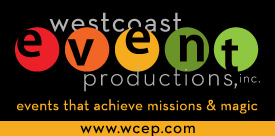
by Isabel Klein | May 11, 2025 | Coming Up, News
Los Angeles, CA. While December continues to be the largest month for charitable giving, 2018 gave way to the biggest shift in distribution across other months. In 2017, approximately 18.2% of giving took place in December and this shifted to just 17% in 2018, according to a report by Blackbaud. June has continued to be the second-largest giving month of the year, which aligns with the end of the fiscal year for many nonprofit organizations.
The digital marketing firm for nonprofits, Blackbaud, released this finding in its 2018 Charitable Giving Report.
In 2018, overall charitable giving in the United States increased by 1.5% on a year-over-year basis. Large organizations grew by 2.3%; medium organizations increased 2%; and small nonprofits experienced a decrease of 2.3% compared to the same time period in 2017. Since 2016, overall giving has grown 9% and giving to Foundations grew 5% over the same three year time period.
Online giving grew 1.2% in 2018 compared to 2017. Large organizations had a decrease of 0.5%; medium-sized organizations grew 3.7%; and small nonprofits grew 0.7% on a year-over-year basis. Since 2016, online giving has grown 17%, and average online gift amounts have continued to increase. The percentage of total fundraising that came from online giving once again reached another record high in 2018. Approximately 8.5% of overall fundraising revenue, excluding grants, was raised online. In 2018, 24% of online transactions were made using a mobile device.

CARE is a leading humanitarian organization fighting global poverty and places special focus on supporting women and girls. (Photo by Getty Images/Getty Images for CARE)
This is the continuation of a growing trend we have measured over many years now. Arts and Culture organizations had the largest growth in both overall and online giving during 2018. Animal Welfare, International Affairs, Higher Education, and Public and Society Benefit organizations also experienced significant growth in overall giving compared to 2017. Public and Society Benefit, Healthcare, and Faith Communities also had growth in online giving in 2018. 2018 continued the longest sustained period of charitable giving growth since the last recession.
There are several key trends shaping charitable giving that are highlighted here. First, charitable giving in the United States is returning to normal levels following two years of significant growth. Second, online giving is entering a new phase where mobile and other digital channels continue to change how donors engage with nonprofit organizations. Finally, giving to Foundations and Donor Advised Funds (DAFs) continues to grow in response to supporter preferences and changes in incentives. A 36-month view of fundraising from the same organizations reveals a 9% growth in overall giving and a 17% increase in online giving. When we take a broader view, spikes in giving during 2017 gave way to more normal growth rates in 2018. There is a tendency to want to identify a single reason for shifts in giving, but that is not how the philanthropic ecosystem works.

by Isabel Klein | Mar 5, 2025 | Coming Up, News
Los Angeles, CA. As we turn over a new leaf, 2025 looks like an exciting time for nonprofit gala events. Now, fresh trends are emerging to redefine the way organizations engage their communities and drive meaningful impact.
The gloom of the unprecedented times seems to have been pushed to the background, and things are looking slightly better, according to Better World. The nonprofit website explore the top trends that are set to shape the landscape of nonprofit galas this year. It highlights different ideas that may help you achieve your fundraising goals and build a strong relationship with donors and your community.


#1 In-Person Events Are Making a Comeback
After almost two years of virtual hangouts and video chats, it’s a welcoming change to witness the comeback of in-person events. Nonprofit gala events, specifically, are gaining major traction again, and we’re absolutely looking forward to it.
Benefits of In-Person Events
- One major perk of attending in-person gala events is the chance to have real-life, in-the-flesh interactions.
- It’s pretty incredible to be in a room with people who share your interests, swap stories, and form deeper connections.
- In-person events really foster a sense of community and togetherness that’s tough to recreate online.
- They provide a full-on sensory experience. You can feast your eyes on the lovely decorations, soak up the vibrant atmosphere, relish the tasty food, and groove to the live music.
- It’s an interesting experience that mesmerizes all your senses, making the event super memorable and meaningful.
#2 Precision Fundraising
In the nonprofit gala event, there’s a hot new thing called precision fundraising that’s making waves. It’s all about leveraging data and technology to connect with the perfect donors, at the perfect moment, with the perfect message.
The perks of precision fundraising are seriously impressive because it allows you to optimize your resources to the fullest.
By focusing on the donors who are most likely to contribute, you can avoid wasting time and energy on individuals who may not be interested or able to help out.
This targeted approach helps increase donor retention rates because supporters feel more valued and engaged.
So, the question arises: how can you pull off precision fundraising? Well, the answer lies in data.
You need to collect and analyze information about your donors, such as giving history, interests, and demographics. You can then use this data to create donor profiles and segmentation, to craft personalized messages that resonate with each individual.
You can make technology work in your favor. You can leverage fundraising platforms and customer relationship management (CRM) systems to track donor interactions, automate personalized communications, and measure campaign success.
#3 Engaging Gala Themes
Runway Fashion Show
A runway fashion show is a perfect opportunity for you to showcase the latest trends in fashion while raising funds. To make the gala event enjoyable, you can include live music, a silent auction for exclusive fashion items, and even a chance for attendees to get their own mini-makeovers.
To do so, you may even team up with local boutiques or renowned designers to add extra prestige to the event and attract fashion enthusiasts who are potentially eager to support your cause.
Last Dance
This theme creates a nostalgic atmosphere, bringing back memories of iconic dance eras like the ’70s disco or ’80s pop.
You can feature a live band or DJ playing popular hits from the chosen era, a dance floor for guests to flex their moves, and even hold dance competitions for more interactivity.
For bonus points, decorate the venue with disco balls, vintage posters, and themed photo booths, and encourage the attendees to dress up in attire that reflects the era to keep up with the vibe of the event.
Black-Tie and Pearls
A black tie and pearls theme never goes out of style. This event can be a great way to engage donors who love to dress up in sophisticated attires. You can sell the event tickets at a premium price and have a silent auction or raffle to raise funds.
Nature Themes
Such events celebrate the beauty of nature while raising funds for conservation initiatives. You can transform the venue into a lush garden or a tranquil forest, with decorations inspired by the natural world. For a more interactive experience, make the guests enjoy farm-to-table meals made from local and organic ingredients.
For the oomph factor, include educational displays about the importance of environmental conservation, interactive activities like planting trees, or guided nature walks. By doing so, you can attract eco-conscious attendees to support your cause.
Monochromatic Themes
From decorations to attire, choose a single color and incorporate it into every aspect of the evening. For a “red” theme you could include red tablecloths, red floral arrangements, and red accents throughout the venue.
Also, encourage the guests to dress in the chosen color, so they can add to the overall ambiance. You can even feature a live auction of unique items or experiences that match the monochromatic theme to further engage the attendees.
#4 Accept Donations Through Various Channels
As a nonprofit, you heavily rely on donations to support your cause and keep the operations running. But, payment often becomes a hindrance in achieving your fundraising goals. So, to maximize donations, you must provide various payment channels to your donors.
Here are some payment channels that you can use to accept donations:
Credit and Debit Cards
You can use payment processors like PayPal, Stripe, and Square to accept credit and debit card payments. These payment processors even offer features like recurring donations, company matching, and donor management.
Digital Wallets
Digital wallets like Apple Pay, Google Pay, and Venmo are highly popular among younger generations.
1.31 billion people will use a mobile payment system for their cashless transactions by 2025, according to data given by Statista. Apple Pay transaction values would grow up to $1.5 trillion by 2024. This should be reason enough for you to provide payment options such as Apple Pay, Google Pay, Venmo, etc.
Cryptocurrency
Cryptocurrency donations are becoming more popular among donors. You can accept cryptocurrency donations through payment processors like BitPay and Coinbase.
Bank Transfers
You can also use bank transfers to accept donations. To make this possible, you can integrate payment processors like ACH Payments and Dwolla to accept bank transfers. By providing various payment channels, you can make it easier for donors to donate.
As a nonprofit, you should optimize online giving through tools that upgrade one-time donors to recurring donors, flag abandoned cart donors, pinpoint donor positions through location-based AI, and provide digital wallets.
By doing so, you can attract new generations of donors and convert donor intent into a completed donation.
#5 Work Alongside Digital Partners That Promote Scalability
As a nonprofit, working alongside digital partners that promote scalability can be highly beneficial for you in generating funds. Here’s how you can make it work:
- Use digital fundraising platforms like BetterWorld to host virtual gala events, accept online donations, and engage with donors.
- Partner with social media influencers to raise awareness and funds for your cause. You can work with influencers to promote your campaigns and make them encourage their followers to donate.
- Adopt digital wallets and crypto to make it easier for donors to donate and to attract younger donors who prefer digital payment methods.
- Use data analytics tools like Salesforce to gain insights into donor behavior and optimize your fundraising efforts.
- Embrace digital partner activations to increase engagement and reach new audiences.
- Partner with companies like Google and Microsoft through their philanthropy programs to promote your campaigns and reach new donors.
#6 Use Privacy Controls to Promote Targeted Marketing
In our tech-savvy world, privacy has emerged as a top priority. People want to have a feeling of security and peace of mind when it comes to safeguarding their personal data. That’s why privacy controls have gained immense significance for nonprofits, especially in the realm of targeted marketing.
To boost targeted marketing at your nonprofit gala events, here are a few savvy tips for using privacy controls:
- Ensure that your supporters fully grasp what they’re signing up for.
- Clearly explain how their information will be used and provide them with the means to manage their privacy settings effectively.
- Offer various options for supporters to select the types of messages or campaigns they wish to receive. This way, you can customize your communications to align with their specific interests and preferences.
- Simplify the process for supporters to opt out of certain communications or modify their privacy settings. Make it effortless for them to have control over their engagement.
- Respect their decisions and ensure they feel empowered to make choices.
- Benefit from the information supporters have willingly shared to create personalized experiences at your gala events.
- Tailor your messaging, event invitations, and interactions to make them feel valued and understood.

by Elisa Klein | Jun 14, 2020 | Coming Up, News
Los Angeles, CA. The California Department of Justice Charitable Trusts has issued new guidelines during the worldwide COVID-19 pandemic and State’s shelter-in-place order.
Right now charitable organizations are called upon more than ever to meet the critical needs of communities. In California, Attorney General Becerra (pictured above) is conducting outreach to nonprofits with the new information.
Here are a few of the modified details:
Unless prohibited by the nonprofit’s emergency bylaws, the following actions can be taken to conduct the corporation’s ordinary business operations and affairs during an emergency: Directors may participate in the board meeting through telephone conference calls, video conference calls, or through electronic transmission provided that each director can communicate with other directors concurrently and has means of participating in all matters before the board.
Directors of public benefit corporations can take action without a board meeting if all directors consent in writing and the quorum requirement is met. (Corp. Code, § 5211, subd. (b).) The written consent of the directors must be kept with the minutes of the proceedings of the board. (Id.) Note that directors cannot vote by proxy.
Many nonprofit organizations have endowment funds, which are donor-restricted funds that are intended to be invested and used in perpetuity to support the nonprofit’s charitable programs. Endowments are subject to the requirements of the Uniform Prudent Management of Institutional Funds Act (UPMIFA). Nonprofits need to be cautious on how much they spend from their endowment funds. Spending more than 7 percent of the fair market value of an endowment fund may create a presumption of imprudence. While your organization may be tempted to look to endowments as a means of addressing unanticipated costs and budget shortfalls, before your organization decides to invade principal or borrow against the principal, which is not permitted, the board should contact the donors to inquire whether they are willing to release or modify restrictions to allow for more spending authority.
For more information, here’s a link with all the information:
https://oag.ca.gov/sites/all/files/agweb/pdfs/charities/publications/charities-covid19-governance.pdf

















